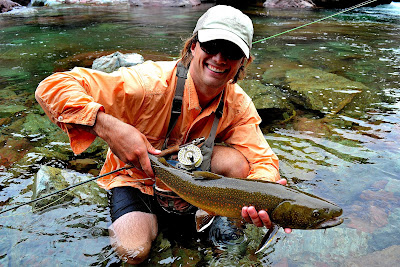The causes of this decline of the bull trout are many and varied. These impacts are often categorized into three groups.
1. problems with land management
2. problems with water management
3.problems with fisheries management
The influence of poorly executed land management practices including grazing, logging, mining, and roads along stream are well documented. Poor management impacts the immediate area and a considerable distance downstream from increased sediment loads in the stream. Only 18 percent of the bull populations and stream segments range wide are not threatened by degraded conditions.(Isaacson 1994)
The Bull trout is an incredible important indicator of overall riverine ecosystem health. Among the salmon family, the bull, is one of the most stringent for requiring clean cold water for successful reproduction and survival. With little tolerance to water warmer then 64 deg. F and is very sensitive to sedimentation of streams. A bull cannot exceed their tolerance limits for any of these factors. Water management problems can impact bulls by fragmenting populations, degrading water quality, and changing water flow patterns. Most importantly is the use of river water for irrigation. As much as 80% of stream flow has been removed from rivers. Second, irrigation return water is frequently warmer then 64 deg. F creating a thermal barrier from upriver spawning habitat. Irrigation return is also full of unhealthy sediments and chemicals.
Fisheries management problems is another issue face by Bulls in the past. The brook trout was introduced at the turn of the century creating competition and hybridization. Since brook trout spawn at a younger age they will numerically swamp the bulls' reproductive potential. From 1913 to 1914 a large scale commercial net fishing was permitted in an attempt to eradicate the species. (Brown, 1971) At the time the view of bulls as a pest species may have originated due to their extremely predatory habits on eggs and juveniles of other introduced salmonid fish species. The introduction of alien species also brought forth disease such as Whirling. The fact that state fish and wildlife agencies permitted a game fish species to decline to the point of being extinct does not speak highly of their concern for native fish species. Luckily in the past 10 years or so this has taken a turn for the better.
Bull Trout Populations in the US declined in the 1980s and 90s. With recent regulations the once Dolly Varden is back on the feed! Targeting bull trout in Idaho is completely legal on a catch and release basis. In Montana the Hungry Horse Reservoir, Swan Lake, and South Fork Flathead River is open to catch and release.



No comments:
Post a Comment